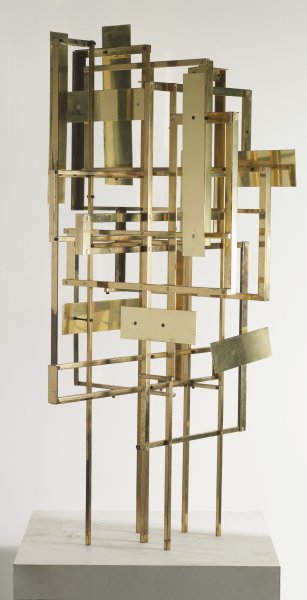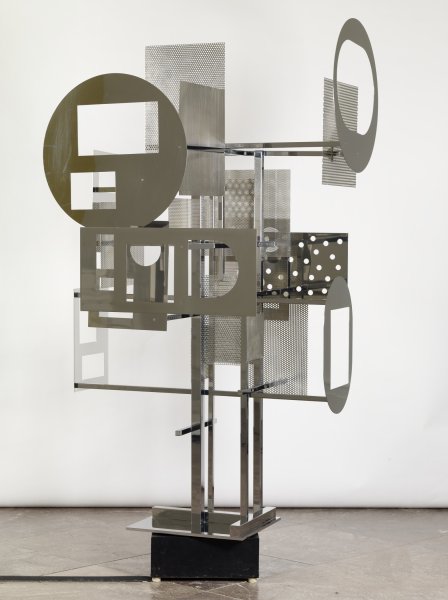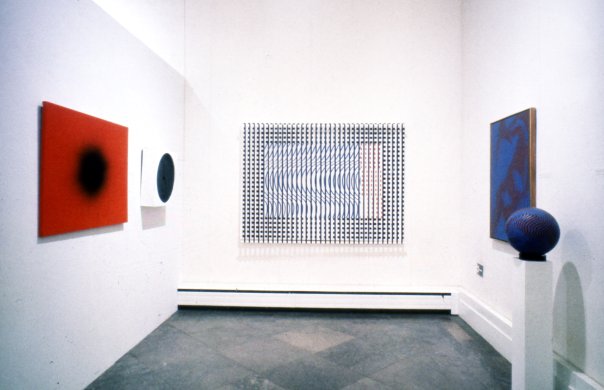The work of sculptor Nicolas Schöffer was shown for the first time in the United States as part of Art Today: Kinetic & Optic, a special exhibition assembled as part of The Buffalo Festival of the Arts Today in 1965.
The exhibition was composed of 84 kinetic and optic sculptures and paintings by 48 artists, and marked the first time that a U.S. art museum had exhibited the two movements simultaneously.
Schöffer was on hand from Paris to install and maintain his works, which were primarily electrically programmed kinetic sculptures. Among these was Cysp I, 1956 (pictured above), a groundbreaking construction with an electronic “brain” that emits light and sound, moves at various speeds, and reacts to color and heat, as well as Spatiodynamique 22, 1954 (pictured below), which is now in the Albright-Knox's collection.
In the 1960s, Schöffer began to take his work in a direction he referred to as luminodynamism, a shift that resulted in his series of “Lux” sculptures. Lux 9, 1964—which is currently on view in Giant Steps: Artists and the 1960s (through January 6, 2019)—revolves on a motorized base, generating a painterly form of kinetic art in its unfolding of shadow and reflected light.






